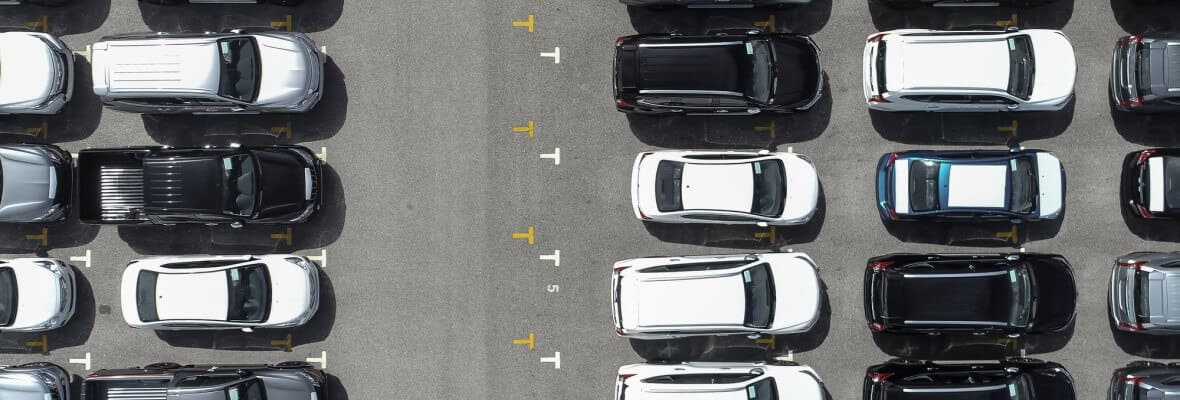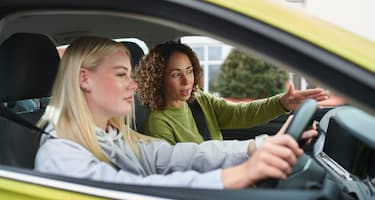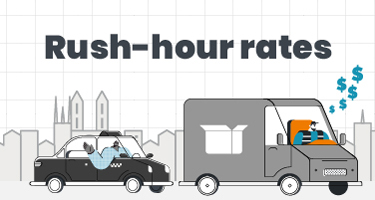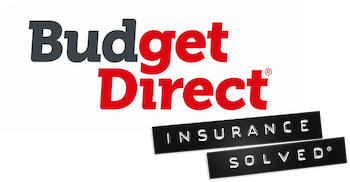Find out how many vehicles were sold in Australia during 2021, and the responses to our survey on car buying.
Quick Stats
In 2021, new vehicle sales rose by 14.5% on 2020’s figures[1]
Electric vehicles sales nearly tripled from 2020 to 2021 - with EVs making up around 2% of Australia’s new vehicle sales in 2021[5]
Since 2021, acquiring used cars has been more common among our survey participants than acquiring new cars (previously, buying new had been more common).
To understand the current climate of Australia’s new and used car markets, we’ve collected the latest industry data and surveyed 867 Australians 18+ (who own registered cars) through Pure Profile to uncover:
1.0 Australian New Vehicle Sales Statistics
After hitting record lows in 2020, the new car market bounced back in 2021 - recording a 14.5% increase on 2020. This can largely be attributed to strengthened supply chains following the first year of COVID-19.
Class |
% of New Vehicle Sales in 2021 |
% of New Vehicle Sales in 2020 |
|---|---|---|
SUV |
50.65% |
49.59% |
Light Commercial |
24.12% |
22.42% |
Passenger |
21.10% |
24.22% |
Heavy Commercial |
4.13% |
3.77% |
12 months ago, we predicted that SUVs would make up a majority of new vehicle sales in 2021. Sure enough, this forecast proved accurate, with SUVs amassing total sales of 531,700 - just over 50% of all new vehicles sales in 2021.
Interestingly, light commercial vehicles sold in greater numbers than passenger cars in 2021.
Brand |
2021 Sales (% Market Share) |
% Change on 2020 |
|---|---|---|
Toyota |
223,642 (21.3%) |
+9.2% |
Mazda |
101,119 (9.6%) |
+18.1% |
Hyundai |
72,872 (6.9%) |
+12.4% |
Ford |
71,380 (6.8%) |
+19.8% |
Kia |
67,964 (6.5%) |
Not Available |
Toyota has continued its dominance of the Australian new car market, occupying over 20% of new vehicles sales in 2021. However, Mazda and Ford experienced the largest growth out of the brands who were in the top 5 last year - each surpassing the industry growth rate of 14.5% year on year.
State/Territory |
Jan 2022 Sales |
% Change on Jan 2021 |
|---|---|---|
NSW |
23,035 |
-9.8% |
Vic |
20,397 |
-1.6% |
Qld |
16,423 |
-1.3% |
WA |
7,578 |
-7.8% |
SA |
5,170 |
-2.2% |
Tas |
1,468 |
+15.4% |
ACT |
1,175 |
-9.7% |
NT |
617 |
-13% |
Looking into the earliest stages of 2022, it seems as though new vehicle sales have taken a step back from 2021 figures. Out of all Australian states and territories, only Tasmania showed greater sales figures in January 2022 compared to January 2021.
2.0 Australian Electric Vehicle Sales Statistics
State and territory government initiatives, lower prices, and increased model availability all contributed to a sharp increase in electric vehicle (EV) sales during 2021[6]. In fact, EVs made up roughly 2% of all new vehicle sales in 2021 - an almost unimaginable rate of growth from the 49 net sales in 2011
2021 might have proved a great year for EVs in the Australian market. But on the international front, Australia lags well behind the global average of EV’s share of total new vehicle sales. Of all cars sold globally in 2021, 9% were electric.
3.0 Car Sales Survey Results
3.1 How did you acquire your primary, everyday car?
84% of Australian participants acquired their primary, everyday car on the open market (new or used). However, this dropped to just 67% of participants aged 18 to 24. Rates of both being gifted a car, and buying from someone known to them were far higher for younger vehicle owners.
3.2 Was your primary, everyday car new or used when you acquired it?
Interestingly, of our survey participants, there was an almost 50/50 split between people who bought their car new, and those that acquired it used. But when ages are considered, a clear trend emerges. Younger participants were far more likely to acquire a used car, whereas participants 35 and over were all more likely to acquire their car new.
Going state by state, New South Wales, Victoria and Queensland respondents were all more likely to acquire their primary, everyday car new. In Western Australia, South Australia or Tasmania, respondents were more likely to have acquired their car used.
By asking participants in Q3.4 when they acquired their primary, everyday car, we can see how likely a person was to have bought a used car over time. Of participants who acquired their car during or before 2000, only 27% acquired it used. For those who acquired their car in 2021 or after, this increased to a staggering 57%. This could be due to decreased global car production, forcing more drivers in the COVID-19 era to turn to the used car market[1].
3.3 In what year was your primary, everyday car manufactured?
Astonishingly, 2.7% of our participants who acquired their current, everyday car when it was brand new stated that their car was manufactured in 2000 or prior. Overall, almost 60% of participants said their car was produced from 2011 to 2020.
Again, the age of the driver seems to impact car buying habits. Participants aged 18-24 were more likely to own a car produced in (or before) 2000 than those aged 25-54. This could likely mean that participants in this age class own a car older than they are.
Participants aged 25-34 were the most likely to respond as owning a car manufactured during (or after) 2021. Given this cohort didn’t have the highest rates of new car ownership, it’s likely that those aged 25 to 34 who did buy a new car did so in the last few years.
3.4 In what year did you acquire your primary, everyday car?
Over 70% of participants in our study acquired their current everyday car between 2011 and 2020. However, the most incredible finding here relates to the split between participants who acquired their car new, compared to those who acquired used cars. Used cars were more likely to have been acquired in 2021 or 2022 than new cars.
Western Australians were the most likely to have acquired their current everyday car in the last few years.
3.5 What best describes your primary, everyday car?
Over 30% of our Australian respondents said their primary, everyday car is a sedan. But as industry data from the Federal Chamber of Automotive Industries (FCAI) show, SUVs are rising in popularity and sales in recent years. And this reflects in the years participants’ cars were manufactured. 43% of participants’ cars produced during or after 2021 were SUVs - wildly ahead of both sedan and hatchback figures for cars produced.
Utes and 4x4s also seem to have benefited in recent years. Based on the car’s year of manufacture, utes grew from 2.5% of all cars produced between 2011 and 2020, to 4.5% of cars produced during or after 2021.
Younger participants (18-24) were far more likely to own a hatchback than any other class of car with hatches making up 57% of all cars owned by this cohort. Those aged 25-34 were the most favourable toward SUVs (with over 36% owning SUVs), owing primarily to their family practicality.
3.6 What powers your primary, everyday car?
It’s worth immediately noting that within our 867 survey participants, we did not capture any electric vehicle drivers. This is still fairly representative of the current state of electric vehicles on Australian roads. 2% of new vehicle sales in 2021 might be an improvement on previous years’ efforts, but still doesn’t equate to a statistically significant amount of EVs across all cars owned in Australia[5].
However, one clear trend is that cars running on unleaded fuel are declining. 90% of cars owned by our participants that were produced during (or prior to) 2000 ran on unleaded fuel. When analysing cars produced during (or after) 2021, that drops to just 75%.
To balance this decline, battery/fuel hybrid options have risen sharply. Hybrid cars made up just 1.2% of participants' vehicles produced between 2011 and 2020, but rose to 6.8% of vehicles produced during (or after) 2021.
Matching the core findings of reports provided by the Electric Vehicle Council, our Australian respondents seem to be increasing their desire to run cars with electricity[5].
3.7 Did COVID-19 make it difficult, or more expensive for you to acquire your primary, everyday car?
Reduced production due to global lockdowns interrupted the global supply of cars, showing in FCAI’s data on new vehicle sales in 2020 and 2021.
While 2021 showed an uplift in total new vehicle sales, our respondents noticed that the impacts of COVID-19 are only increasing. In 2020, only 23% of respondents noticed that the process was made more difficult or expensive due to COVID-19. By 2022, this was up to nearly 60%.
When splitting drivers who acquired new and used cars, an interesting trend occurred. Around 20-25% of new and used car owners agreed that COVID-19 made the process of acquiring a car in 2020 more difficult or expensive. In 2021, participants trying to acquire new cars noticed that it was significantly more difficult or expensive than those trying to acquire used cars. But by 2022, the used car market caught up. Roughly 60% of new and used car owners agreed that the car acquisition process was made tougher by COVID-19.
4.0 Key Findings
COVID-19 seems to have made all forms of car buying more difficult in 2022
FCAI’s findings that January 2022’s sales are down on January 2021 highlights an alarming trend in Australia’s new vehicle market - that the worst of COVID-19 might not be behind us. This was further supported by our own survey results, where 60% of those who acquired cars in 2022 found the process more difficult or expensive due to COVID-19.
Decreased production, and now a declining used car market is adding up to further strain on car availability. Even as car production increases, the effects of this vehicle drought are likely to drag on for quite some time.
The used car market has become the new new car market
Out of our survey participants who acquired their car during or before 2010, a majority acquired it new. Even for participants who acquired their car from 2011 to 2020, more acquired their car new than used. However, the effects of COVID-19 have created a shift in availability, and subsequent demand. A majority of participants who acquired their car in 2021 or 2022 acquired it used, rather than new.
While the issues COVID-19 created (decreased production and availability) were only directly correlated with new vehicles, the effects have truly made their way to the used car market. 60% of participants who acquired a used car in 2022 found the process was more difficult or expensive due to COVID-19 - almost exactly matching the rate noted by new car acquirers.
In both sales quantities and COVID difficulties, our survey results suggest that buying a used car is growing more and more akin to buying a new car.
Australia’s interest in EVs is growing
While it’s important to note that our survey did not accurately represent EV owners, it did capture the increased production rate of hybrid cars. Further, industry data from the Electric Vehicle Council proved that Australia’s rate of EVs in total new vehicle sales are growing at an extremely high rate.
Australia has historically suffered from long driving distances, and a lack of availability for electric charging options. But with most modern shopping centres offering parks/charging points for EVs [9] , and home charging solutions being cheaper than ever-rising fuel prices, the barriers to owning an electric vehicle are diminishing.
But as charge points become more common and accessible, the demand for EVs is expected to grow accordingly.
Disclaimer:
This survey was conducted by Pure Profile on behalf of Budget Direct in May 2022. The survey was conducted online with a total sample size of 867, weighted and representative of all Australian adults (aged 18+) who own a registered car.
All other data on this website are the latest available from the named sources in this article, and were obtained in May 2022. Auto & General Services Pty Ltd does not guarantee the accuracy or completeness of the data and accepts no liability whatsoever arising from or connected in any way to the use or reliance upon this data.





